When I wandered through Kerameikos Cemetery, I stumbled on a quieter side of Athens, far from the city’s busy streets and famous sites. This ancient cemetery, just a short walk from Monastiraki Square, immediately gave me a sense of calm—peaceful, heavy with history.
Here, I found a rare escape where you can connect with Athens’ past and soak in its beauty without jostling through crowds.
Among old stones and shaded paths, each step pulled me deeper into a world where ancient Athenians lived, mourned, and honored their loved ones. Exploring Kerameikos made me realize Athens isn’t just about its iconic ruins; it’s also about hidden corners where history feels personal and oddly peaceful.
Seeing the city from this angle, I started to rethink what Athens really means to me.

Kerameikos isn’t just another archaeological site. It’s a spot where you can slow down, reflect, and see Athens from a different angle.
If you’re craving a break from the usual tourist trail, this ancient resting place mixes history, beauty, and peace in a way that’s hard to find elsewhere.
Kerameikos: The Ancient Resting Place Revealed
Kerameikos hides right in the heart of Athens, holding centuries of stories beneath its soil. Every step among the ruins uncovers tales of ancient funerals, city walls, and discoveries that connect us to another time.
History and Origins
As I wandered through Kerameikos’ winding paths, I realized this place is far more than a burial ground. The cemetery dates back to the 9th century BC, making it the oldest and largest in ancient Greece.
The name comes from “keramos,” meaning pottery, since potters and artisans once worked near the Eridanos River.
Kerameikos grew as both a neighborhood and a necropolis, with lively workshops and silent tombs side by side. I often imagine craftsmen hauling clay pots just steps from solemn burial rituals.
The cemetery became the final home for Athenians across eras—citizens, soldiers, and families alike.
The Role of Kerameikos in Athens
Kerameikos played a big part in Athens’ cityscape. Important city gates like the Dipylon and the Sacred Gate stood at the cemetery’s edges.
These gates launched ancient roads, including the one to Eleusis, home of the Eleusinian Mysteries. I stood by these remains and pictured processions of families and priests passing through.
The site carried both practical and symbolic weight. It hugged the city walls, reminding Athenians about life, death, and civic pride.
Ancient inscriptions, carved into marble steles, reveal names, honors, and sometimes personal messages. Each marker gives a glimpse of individual lives and the shared stories of Athens.
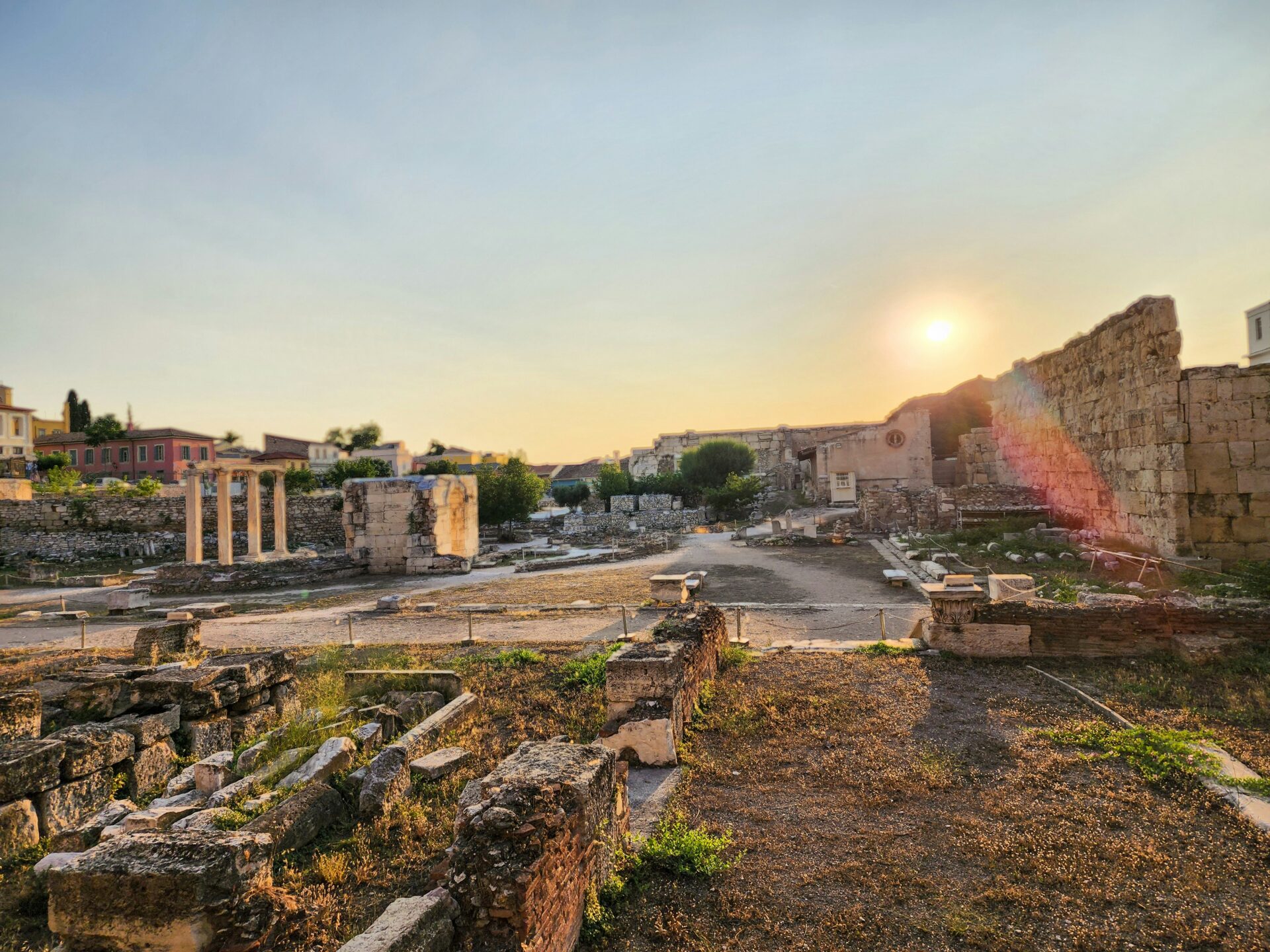
Archaeological Discoveries and Excavations
The German Archaeological Institute kicked off excavations in the 19th century, and people are still digging up secrets today. As I walked among the labeled ruins, I spotted ancient roads, family tombs, and pieces of the old city wall.
Some fences and stones show off intricate carvings and reliefs.
The “Street of Tombs” stands out, lined with impressive grave markers and sculptures. The museum displays artifacts—pottery fragments, gold burial offerings—found in the tombs.
Ancient texts from writers like Pausanias help archaeologists piece together daily life, beliefs, and rituals of the Kerameikos community.
If you’re into Greek history or archaeology, this ancient cemetery feels like a portal to the past. Touching the weathered stones and reading Athenian inscriptions, I find unexpected beauty and a quiet connection to Athens’ lasting spirit.
Finding Serenity: The Beauty of Kerameikos Today
Kerameikos gives you a peaceful break from the buzz of Athens. Ancient ruins, wildflowers, and art come together, creating a space where history and calmness mix in a way that’s hard to describe.
Walking the Sacred Street of Tombs
The first time I walked along the Street of Tombs, the quiet surprised me. It’s more than just a path—this ancient road served as the main cemetery avenue, lined with gravestones, monuments, and reliefs made by skilled sculptors centuries ago.
Some of the most famous names in ancient sculpture, like Kritios and Nesiotes—creators of the original Tyrannicides statues—left their mark here.
What really stands out is the respect given to each life remembered. The tomb markers tell silent stories, each with its own carvings and shapes.
Some show family groups, while others display horses or warriors. The soft crunch of gravel under my feet was the only sound, making the weight of time feel real.
Maps at the entrance help you find your way. I liked wandering slowly, stopping to study gravestones and reading info signs that explain who was honored and how Athenians saw life and death.

Sculptures, Monuments, and Masterpieces
Kerameikos is packed with remarkable sculptures and monuments, mostly from the 5th and 4th centuries BCE. Each piece shows off incredible skill.
It’s easy to lose track of time admiring details—folds in a marble robe, the way hair is carved, the strong yet gentle expressions.
You can spot the influence of the Akropolis, reminding me how much Athenians valued art. Some masterpieces here came from well-known hands, their styles showing the skill of Athens’ top sculptors.
Kritios and Nesiotes left their mark, and seeing these works outdoors, not behind glass, makes the craftsmanship feel more alive.
You’ll find reliefs of family scenes, grave markers for children and elders, and bigger monuments dedicated to city heroes. There’s something humbling about standing face to face with these ancient works, surrounded by birdsong and rustling leaves.
Wildflowers, Nature, and Unexpected Tranquility
What really caught me off guard at Kerameikos was how much nature has reclaimed the site. Along the paths, wildflowers bloom in spring and early summer.
Poppies, daisies, and tiny purple blossoms peek between old stones and walls, softening the look of ancient ruins.
Tall grass and olive trees line the walkways, their branches swaying gently in the wind. I watched butterflies and bees move from flower to flower.
It’s strange to think that just beyond these walls, the city keeps humming along. The peacefulness here feels rare for a spot so close to central Athens.
There are benches in the shade and quiet places to rest. With only the chirping of sparrows and the faint city hum, I found a kind of calm I didn’t expect in such a historic spot.

Myth, Memory, and the Afterlife
Standing in Kerameikos, I feel surrounded by stories that go back millennia. The cemetery is more than a field of ancient stones; it’s a place tied to deep myths, mysterious rituals, and powerful symbols that shaped how Athenians saw life, death, and whatever comes next.
Mythological Connections and Local Legends
Kerameikos sits between the ancient city and sacred roads that lead to Eleusis, home to Demeter and Persephone’s famous mysteries.
Athens’ myths run through these paths. Athena and Poseidon, both big names in city legends, were honored here as protectors of the walls and the dead.
I grew up hearing Greek myths, so I’m drawn to whispers about gods wandering among the tombs. Some legends claim Hermes guided souls from here to the underworld.
Hekate, the guardian of crossroads and spirits, supposedly haunted these entranceways at night. Locals used to leave small offerings—cakes, fruit, or coins—to keep restless spirits happy.
Today, the stones stay quiet, but old stories still cling to the landscape. Every ancient stele seems to echo with names and family lines, each memorial keeping myth and memory tangled together.
Funeral Rites, Rituals, and the Eleusinian Mysteries
Kerameikos stood at the center of Athenian funerary traditions. Families laid out bodies after death and held long vigils. Processions followed sacred roads outside the city, ending at graves like those I passed on my walk.
Mourners carried offerings—olive branches, wreaths, oil lamps—and spoke prayers for the soul’s journey.
The road to Eleusis started at Kerameikos’ gate during the Eleusinian Mysteries, Athens’ most secretive festival. These rites honored Demeter and Persephone, who watched over the cycle of life and rebirth.
Initiates believed that joining the mysteries would promise a happier afterlife.
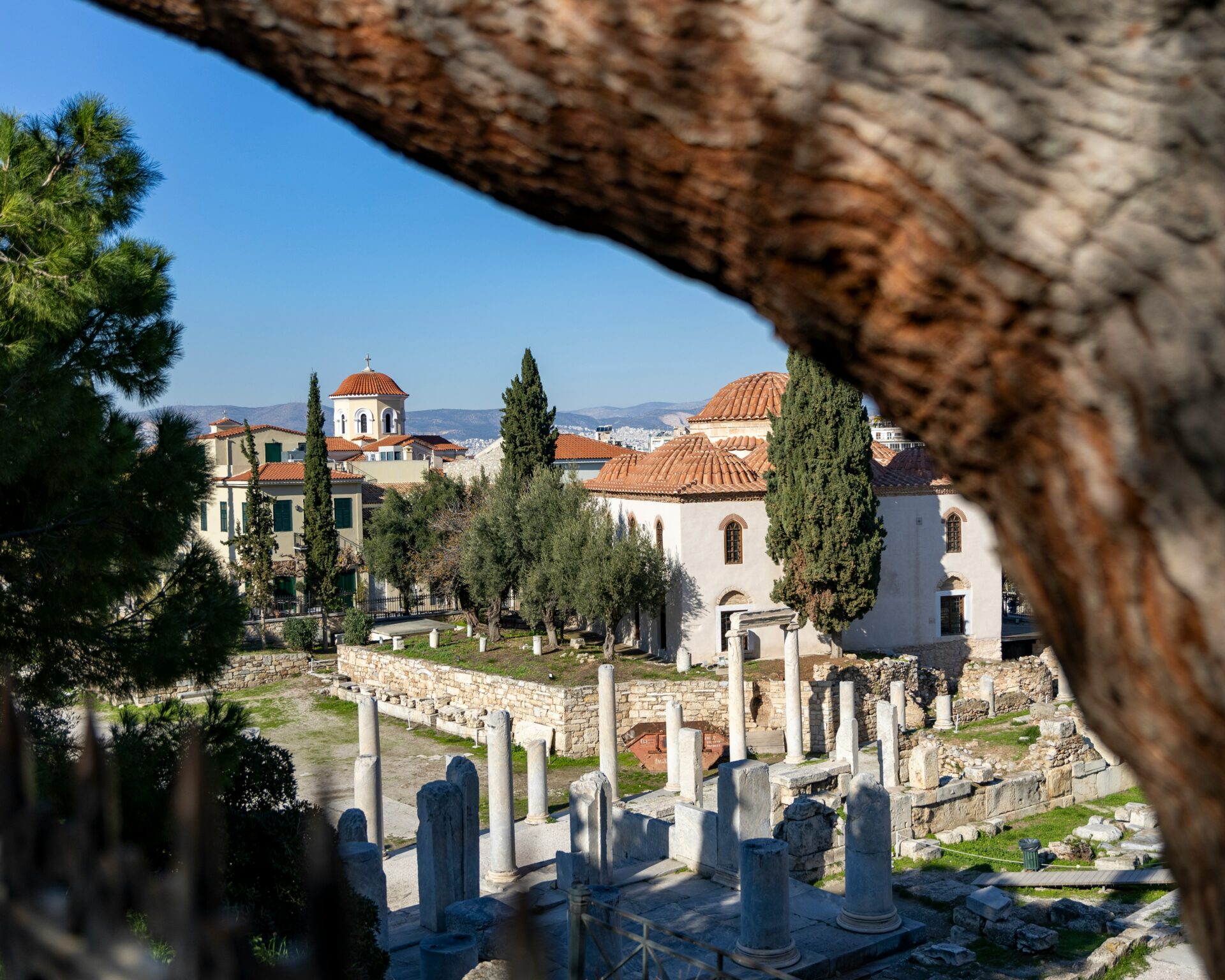
Mystery cults like these offered hope where everyday rituals fell short. I wonder what it felt like to join the march under torchlight, sharing in secrets passed down for generations.
Symbols of Death and the Underworld
As I walk among the graves, I spot symbols carved into marble: pomegranates, snakes, rosettes, and torches. Each one meant something special.
The pomegranate, sacred to Persephone, marks her link to the underworld and the promise of return.
Triptolemos, Demeter’s favorite, sometimes appears riding a winged chariot—showing the shift from life to death. Hekate’s triple-form lurks in the shadows near boundaries between worlds, a sign of her role as a guide in both myth and ritual.
These markers weren’t just for decoration. For ancient Athenians, each shape or figure sent a message—a way to make sure memories and ancestors wouldn’t fade.
Even now, these stones and carvings invite me—and every visitor—to think about what’s beyond.
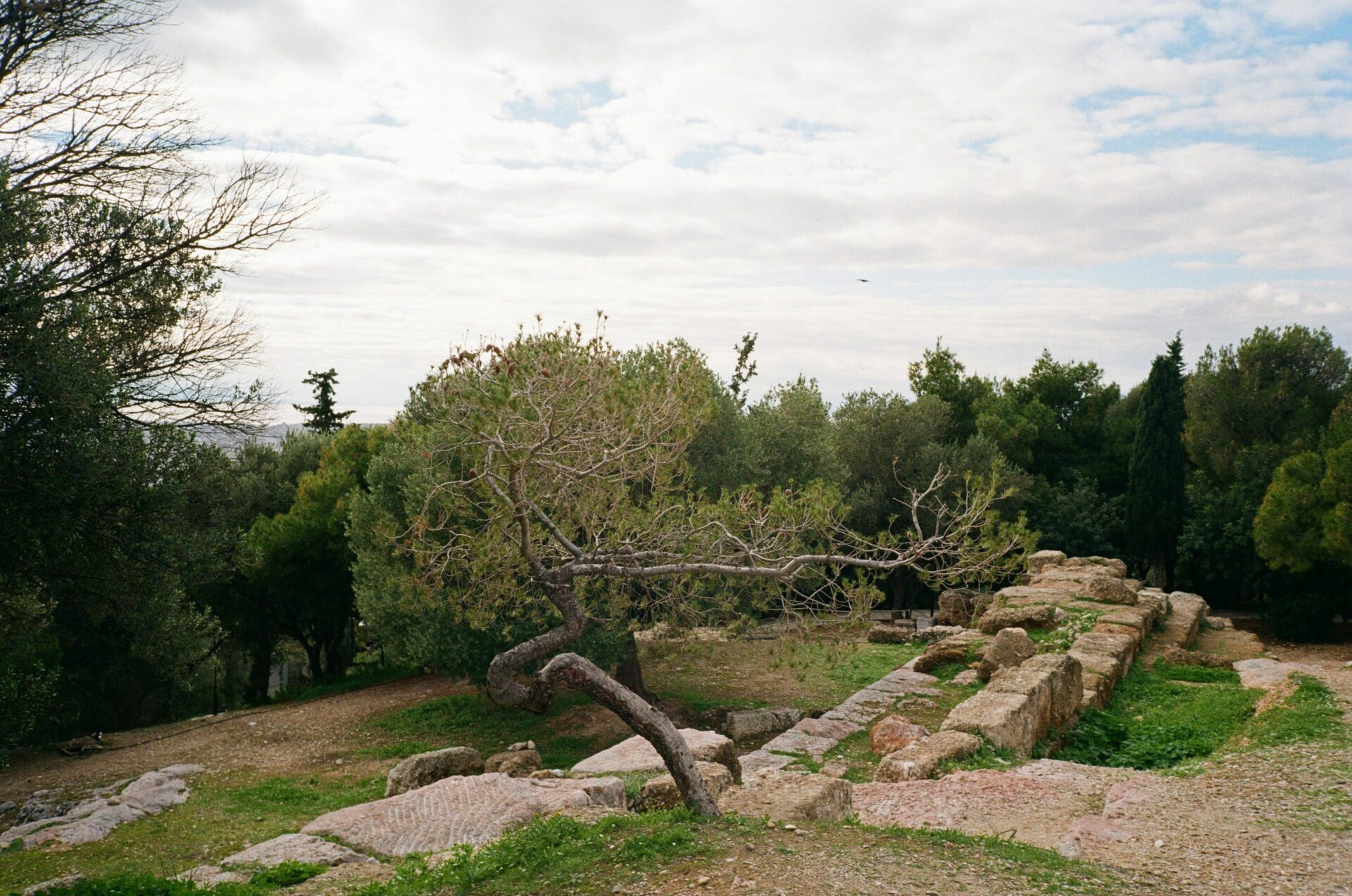
Kerameikos and Daily Life in Ancient Athens
As I walk along Kerameikos’ ancient paths, I spot traces of everyday Athenian life woven between tombs, monuments, and quiet ruins. This place didn’t just witness funerals; it buzzed with markets, rituals, storytelling, and moments where democracy took root.
Community, Trade, and the Athenian Experiment
Kerameikos sat at a crossroads—the main Dipylon Gate was Athens’ busiest entrance. Traders, travelers, and citizens streamed through it daily.
I can almost sense the energy that once filled this place, with pottery shops and small market stalls lining the roads. The area took its name from the kerameis, or potters, who worked in workshops by the river.
These artisans made the famous Athenian vases we see in museums today.
Trade in Kerameikos wasn’t just about pots. Food vendors, merchants selling imported goods, and traders exchanging coins all added to the bustle.
This lively scene made the district a key part of the Athenian experiment, where different classes and visitors mingled and debated. Even now, I imagine this mix as a window into Athens—where commerce met creativity and daily life brushed up against the wider world.
Family, Social Structure, and Rituals
I’m always struck by how much Kerameikos reveals about the family at the heart of Athens. Many tombs have inscriptions and carvings showing home life, farewells, and rituals.
These grave markers didn’t just honor the dead—they reflected the values and structure of Athenian society.
Families shaped social order. In Athens, the oikos, or household, included parents, kids, sometimes extended relatives, and even slaves.
Family tombs showed respect but also displayed a family’s status and belonging. Rituals—leaving offerings or holding remembrance meals—strengthened community bonds and passed down traditions.
These cemeteries stood just outside the city, serving as daily reminders for Athenians about kinship, respect, and the cycle of life.
While I walk here, it’s obvious that Kerameikos kept the memory of family right at the center of public life.
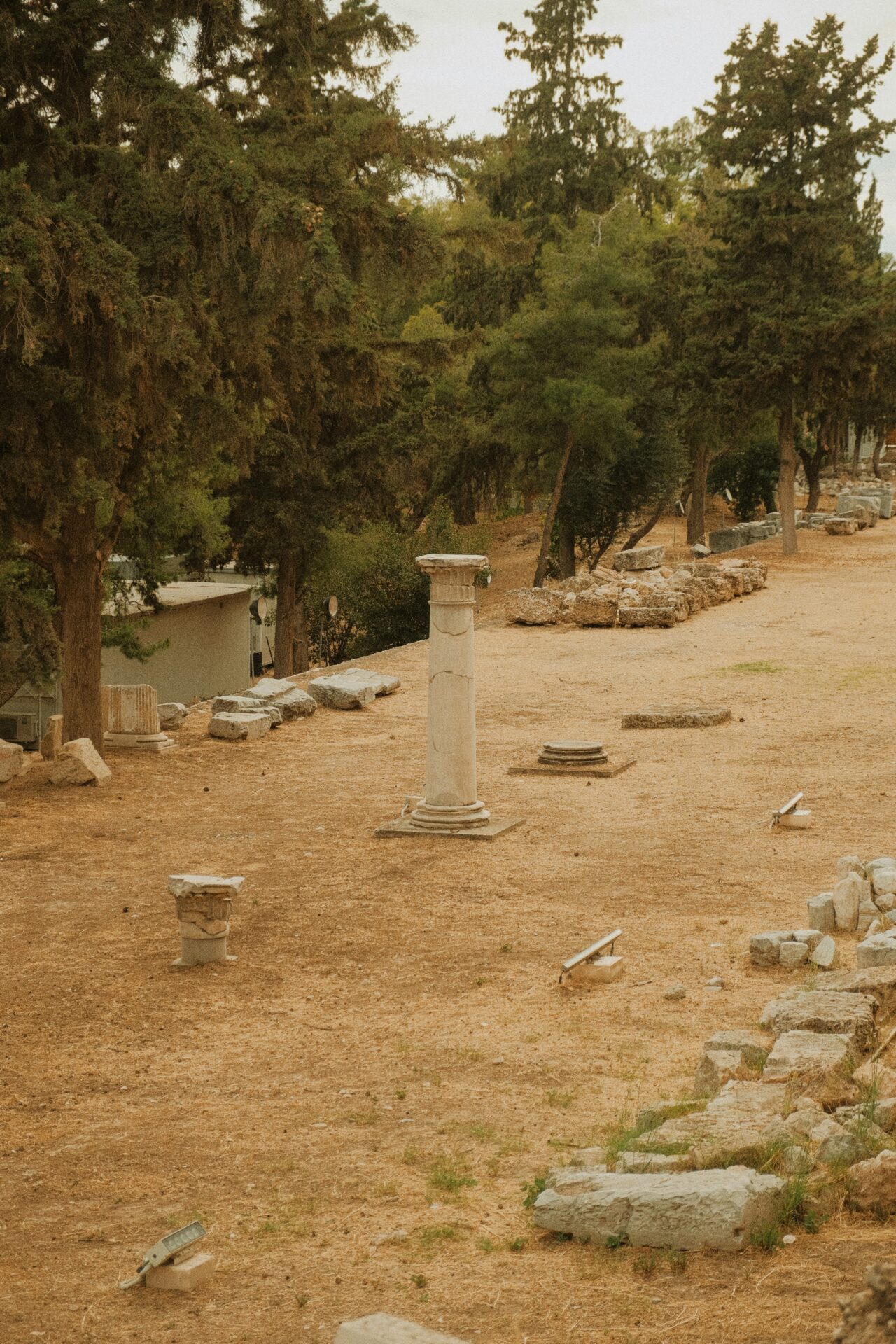
Labor, Employment, and Population
Kerameikos wasn’t some quiet corner; it buzzed with activity and the noise of hard work. Pottery drove the local economy, and potters with their helpers kept the kilns hot near the old riverbed.
They shaped, painted, and baked clay, turning it into utensils and art for homes and temples.
I can’t help but picture the masons, stonecutters, grave workers, and laborers who built and decorated tombs here. Vendors hawked food, oil, and little trinkets to people passing through.
This mix of jobs attracted more than just Athenian citizens—immigrants, travelers, and craftsmen often lived in or around the area.
Here’s a quick look at the kinds of work I imagine while wandering Kerameikos:
| Occupation | Main Tasks |
|---|---|
| Potters | Making vases and plates |
| Masons/Stonecutters | Carving grave monuments |
| Vendors | Selling food and goods |
| Laborers | Moving materials, cleaning |
| Priests | Leading funeral rituals |
All this work gave Kerameikos a unique vibe—a place where everyday life met sacred traditions.
Public Life: Democracy, Festivals, and Associations
Standing by the city gates, I notice how public life spilled right into Kerameikos. The district sat close to both the Agora and the start of festival routes.
During panathenaic processions, crowds packed the streets. These festivals combined rituals, music, athletics, and feasting—everyone joined in, no matter their background.
Kerameikos also played a part in the rise of democracy. Political groups and local associations gathered here, sometimes to debate city issues or just to share a meal.
Walking through the ruins, I’m struck by how Athens thrived on action—people voting, celebrating, and arguing out in the open.
Regular festivals, athletic contests, and debates turned Kerameikos into a stage for Athenian democracy. Associations—groups linked by craft, religion, or neighborhood—provided support and a sense of community.
From the laughter of festival crowds to the serious debates of citizens, Kerameikos pulsed with the life of ancient Athens.
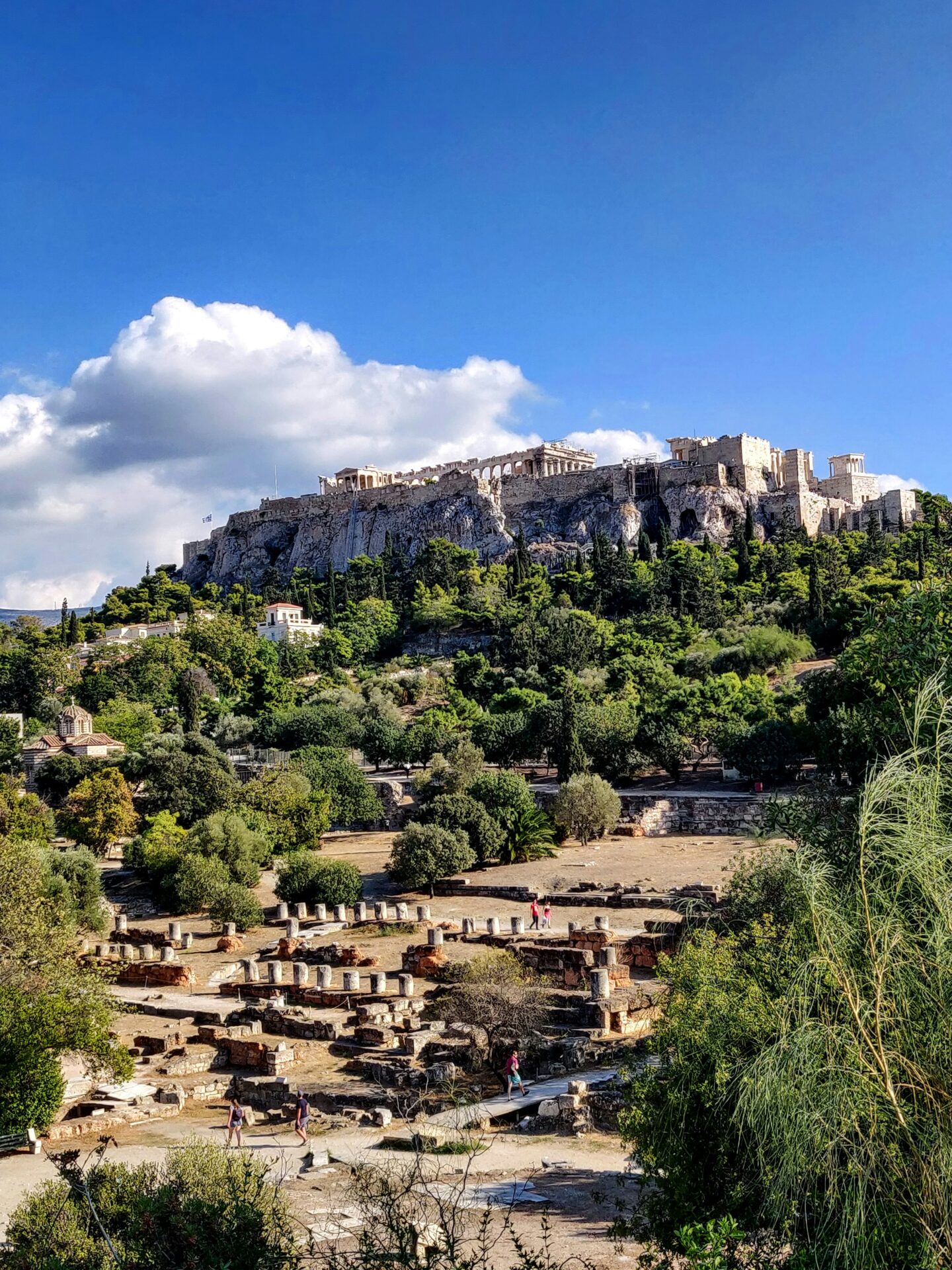
Architectural Heritage and Artistic Marvels
Walking through Kerameikos feels like wandering an outdoor museum, filled with ancient artistry and glimpses of daily Greek life.
Rows of marble tombs stand quietly, their carvings hinting at stories from long ago. Sacred spaces remind me of both public rituals and private grief.
Tombs, Reliefs, and Iconic Structures
The tombs here aren’t just grave markers—they’re true works of art. Many show high-relief sculptures of families, soldiers, and even pets, capturing moments of farewell.
Some tombstones, like the Stele of Hegeso, show detailed scenes from daily life, such as a woman looking at a jewelry box.
As I wander between these monuments, I often notice ancient inscriptions that name the deceased and sometimes mention their job or hometown. These words and images honored not only Athenians but, later, some Roman citizens too.
The ruins of the Dipylon and Sacred Gates still stand, marking where processions once entered and left the city. These gates tie Kerameikos to the bigger story of Athenian civilization, showing it was both a place of memory and daily life.

Influence of Greek Art and Architecture
Kerameikos shows off classical Greek art and architecture in real life. Tomb monuments follow traditional styles, with columns and pediments on many larger steles.
I’m always amazed by the mix of simple Doric lines and detailed reliefs.
The graceful proportions and lifelike figures on the stones explain why Athens led the way in art. Craftsmen here really pushed themselves, showing not just gods like Hermes or Artemis, but also families and soldiers with real feeling.
Since Kerameikos stayed active for centuries, I see layers of history—old Greek styles blending with Roman tastes as time went on. The site gives a glimpse of how art changed with culture and belief, from private goodbyes to mythological scenes meant to protect or comfort.
Sanctuaries and Religious Spaces
All over the site, sanctuaries for different gods and goddesses pop up. At the Sanctuary of Dionysos, I try to imagine the rituals and festivals that once happened among the graves.
Small shrines to Artemis, Hermes, and the Mother Goddess Kybele hint at a complex web of worship tied to death, rebirth, and protection.
The remains of the Temple of Zeus stand out. Not much is left, but I can almost see its columns rising above the tombs, marking a place of power and respect.
Daily life and sacred traditions blended here; evidence suggests that altars and shrines stood right next to family tombs and homes.
These spiritual sites add another layer to Kerameikos, making it not just a cemetery but a living landscape of ritual and belief. When I visit, I feel both the sadness of loss and the comfort these ancient practices must have brought to the living and the dead.

Planning a Visit: Modern Insights and Hidden Gems
Kerameikos feels like a hidden garden, tucked away from Athens’ busiest streets. It rewards visitors with quiet moments, historic neighborhoods nearby, and easy ways to try local food and traditions.
Getting There and What to Expect
Getting to Kerameikos is easy. I usually hop on Metro Line 3 and get off at Kerameikos station—it’s only a short walk.
If I’m near Syntagma Square, I sometimes just walk, passing landmarks and busy cafes.
Entry often comes with the Acropolis combination ticket, so it’s simple to visit more than one site. The grounds rarely get crowded, so I can take my time and soak in the peaceful beauty of the ancient graves and city gate.
Sometimes I spot tortoises sunning themselves on old stones or wildflowers growing beside marble. There’s a small museum on-site with statues and everyday objects found here.
Bring water and wear comfy shoes. There’s not much shade, so a hat helps—especially if it’s hot out.
Surroundings: Plaka, Syntagma Square, and Beyond
Kerameikos sits right next to some of Athens’ most interesting neighborhoods. After exploring, I like to wander toward Plaka, where narrow lanes bloom with flowers and tiny shops.
A little farther is Pandrossou Street, a lively place to pick up handmade souvenirs.
Syntagma Square is about a 20-minute walk away. Most days I catch the changing of the guard at the Tomb of the Unknown Soldier, where the Evzones stand perfectly still in their traditional uniforms.
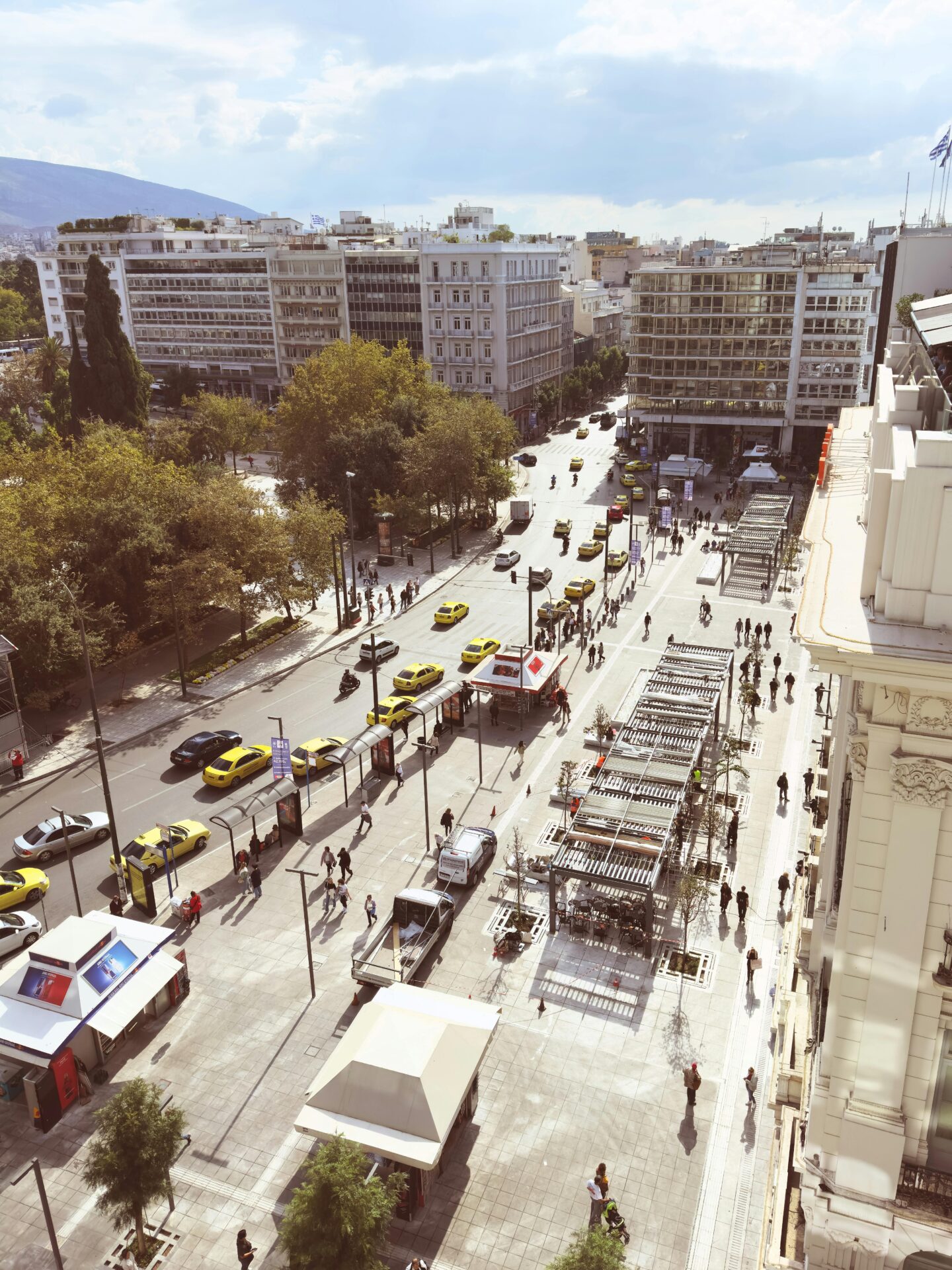
Sometimes I continue to the Metropolitan Cathedral or weave through the Roman Agora and the ruins of Hadrian’s Library. Every spot has its own story and makes downtown Athens feel special.
If I want a change of pace, a quick taxi ride to Piraeus brings me to the busy port and fresh sea air.
Tastes of Athens: Eating, Drinking, and Local Favorites
Walking around Athens always stirs up my appetite. The city never lets me down.
When I leave Kerameikos, I usually duck into a local cafe for strong Greek coffee. They’ll often serve it with a sweet pastry—who could resist?
In Plaka, you’ll find small tavernas that dish out moussaka, souvlaki, and fresh Greek salads piled high with creamy feta. It’s hard to pick a favorite, honestly.
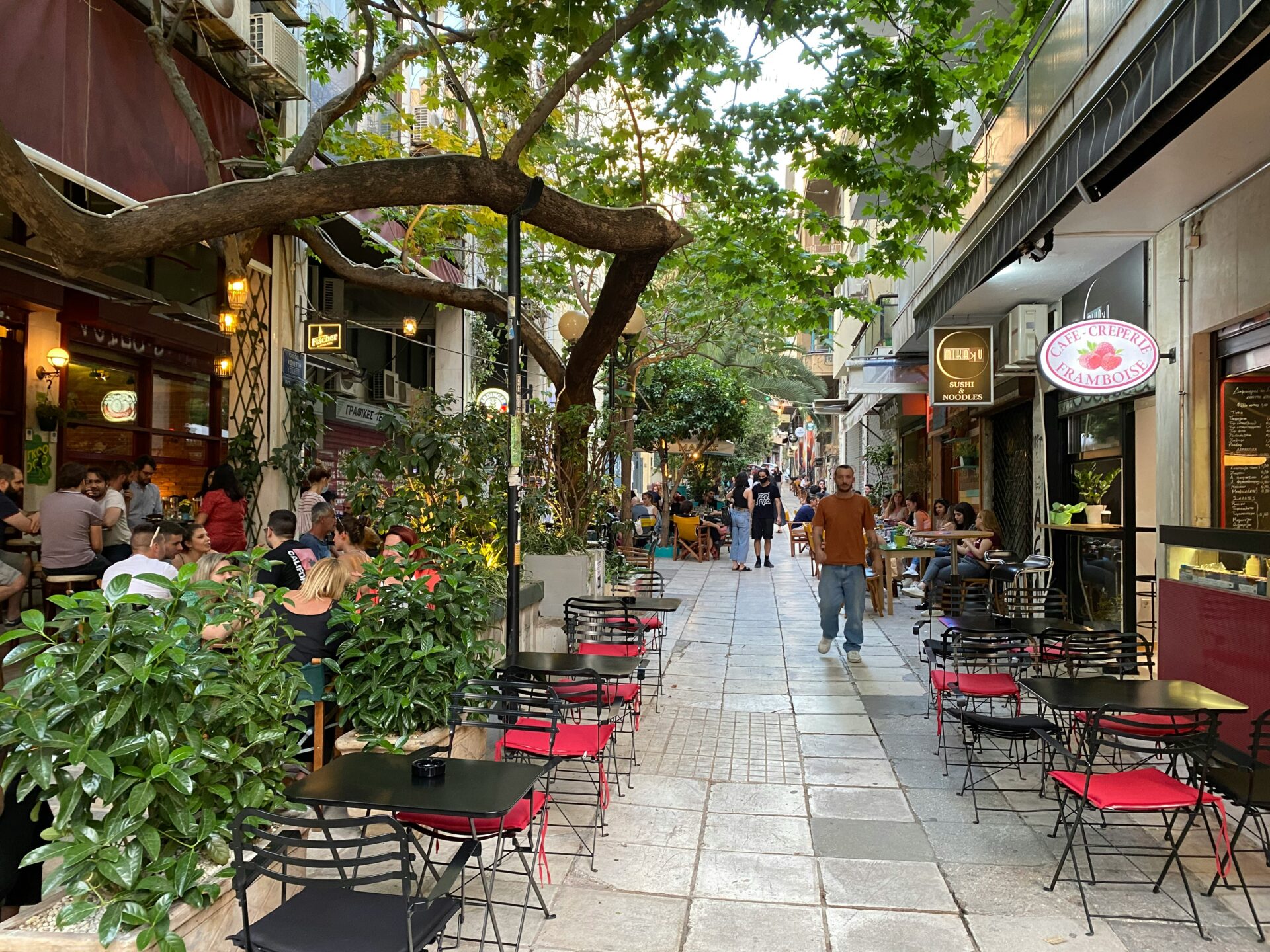
A few spots I keep coming back to:
| Dish | Where to Try |
|---|---|
| Greek Coffee | Kafenio near Kerameikos entrance |
| Souvlaki | Family grill on Pandrossou St. |
| Moussaka | Cozy taverna in Plaka |
Evenings beg for open-air dining under lantern light. The Parthenon glows in the distance—pretty magical, honestly.
I always grab a cold glass of ouzo or maybe a slice of baklava to end the night. Isn’t that what you’re supposed to do here?

